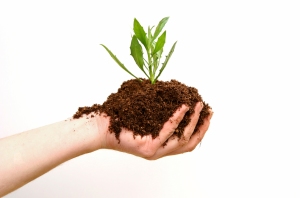 When plants absorb sunlight to produce oxygen through photosynthesis, the water in their leaves evaporates, requiring the plant to pull water from the ground – which could be trouble for some plants in drought-prone areas.
When plants absorb sunlight to produce oxygen through photosynthesis, the water in their leaves evaporates, requiring the plant to pull water from the ground – which could be trouble for some plants in drought-prone areas.
During periods of extreme heat and drought, this process can use all of a plant’s water resources quickly. As a result, when the weather is hotter, a natural reaction when gardening is to water the plants. Unfortunately, too much of a good thing could be detrimental to the plants. If plants are overwatered during the hottest months, it could send mixed signals, encouraging growth at a time when the plant should be conserving resources. Sometimes it’s better to put your landscape on a strict water diet to ensure healthy plants and conserve water during the hottest months.
So what’s the right amount of water for your plants? That relies on several factors, including:
- Climate
- Types of plants
- Current weather predictions
In order to keep your landscape on a strict diet and conserve water, here are a few simple tricks from the Environmental Protection Agency:
- Select plants native to the climate, which will require less water since they are adapted to adjust with the seasons locally. Local nurseries can give you the best advice for native plants along with tips on how to properly care for them.
- Water plants in the early morning or late evening and not during the hottest part of the day. Be sure to note the weather forecast so you don’t water in the morning only for it to rain later in the day.
- Use mulch to help retain moisture in the soil.
- Group plants with similar watering needs together, which will help not only conserve water, but concentrate your watering areas correctly.
When monitoring your plants, there are some tell-tale signs they need water:
- Drooping leaves and stems
- Flowers that lose their petals too soon
- Plant coloration – look for a brownish color
These simple tips will help keep your landscape fit and trim this summer. Interested in learning more about photosynthesis? Check out these articles on How Stuff Works and Encylopedia.com. For more information on finding native plants in your area, check out Find Native Plants.
